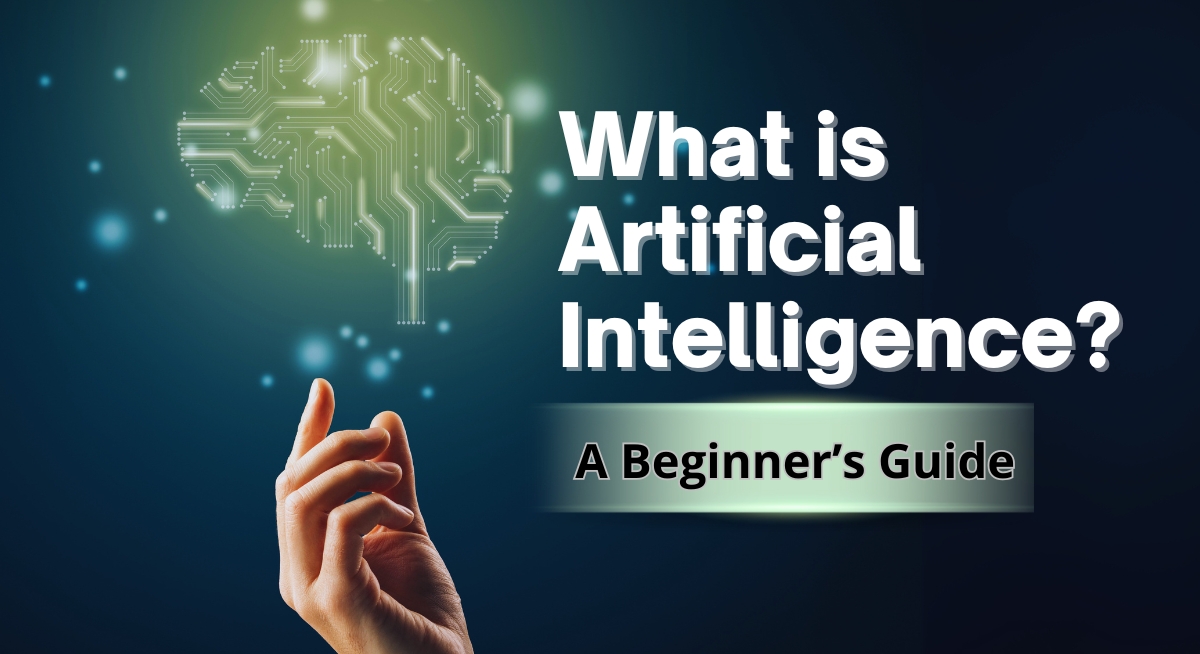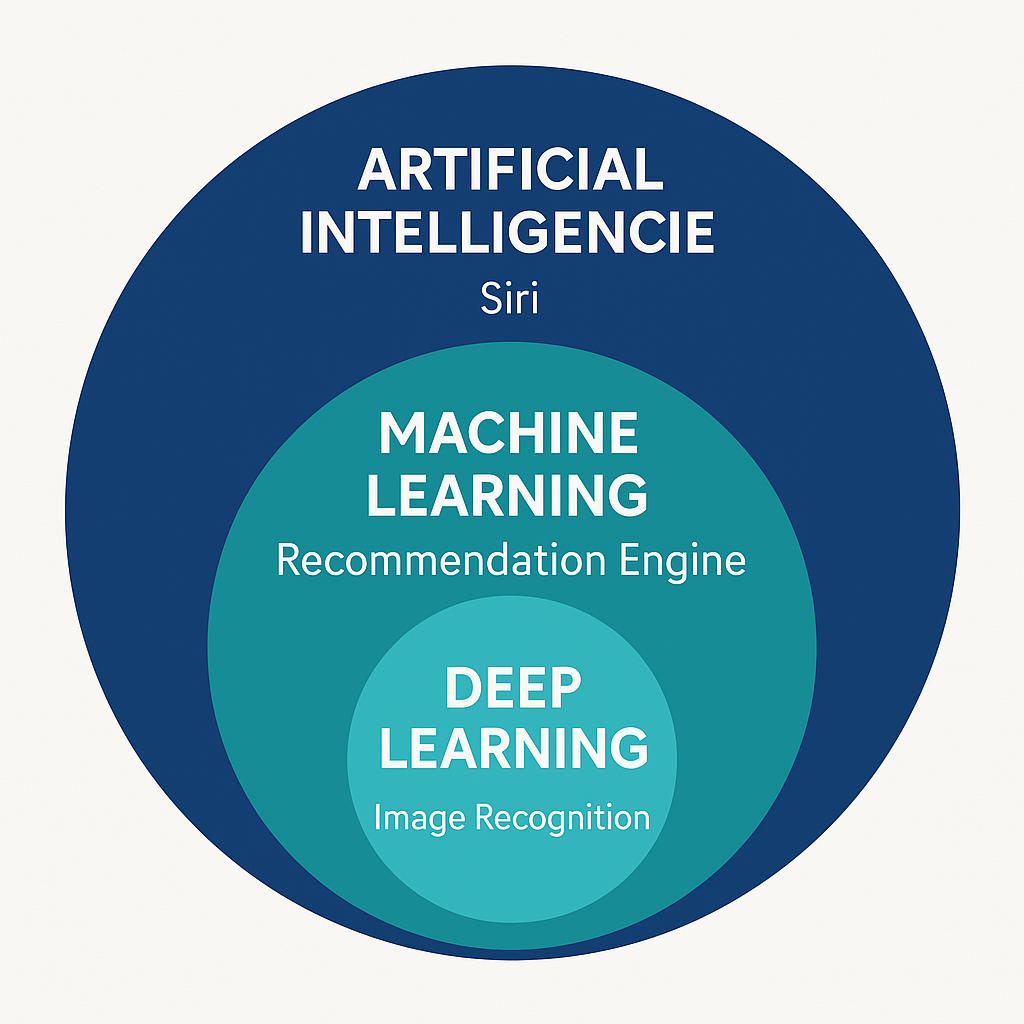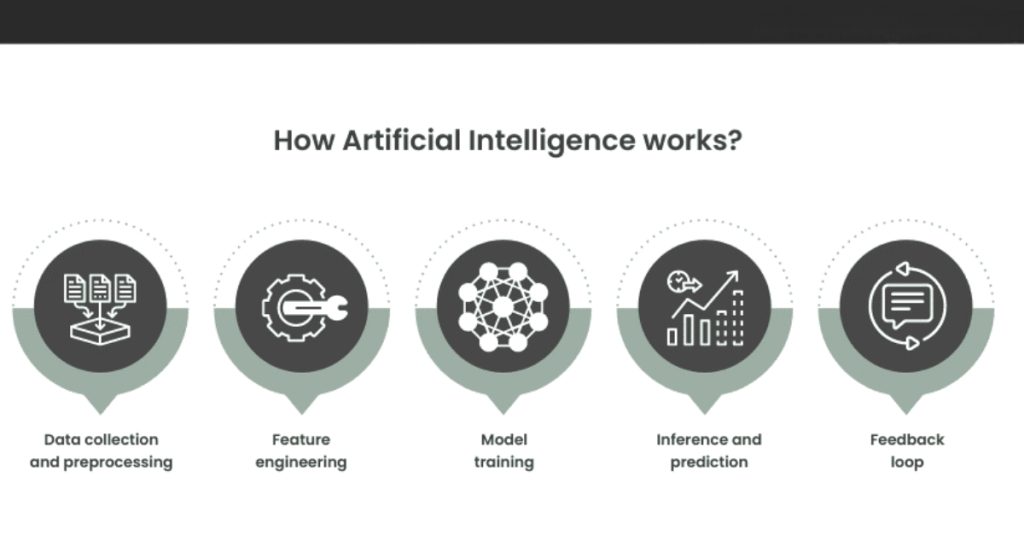
If you’ve been scrolling through tech news, business blogs, or even watching YouTube lately, you’ve probably come across the term Artificial Intelligence (AI). But what is Artificial Intelligence in simple words? At its core, AI is about creating machines that can think, learn, and make decisions like humans. From voice assistants like Siri and Alexa to self-driving cars, AI is quietly shaping our daily lives. This beginner’s guide will break down the basics of AI in plain English, so you understand what it is, how it works, and where it’s headed.
In the simplest sense, Artificial Intelligence is the ability of a computer or machine to mimic human intelligence. That means AI can analyze data, recognize patterns, solve problems, and even understand natural language.
A common confusion arises when people mix up Machine Learning (ML) vs Artificial Intelligence. Here’s the difference:
So, when people ask, “How does AI work in simple terms?”The answer is: AI learns from data + algorithms + computing power. Still confused about the difference? Check out our detailed guide on AI vs Machine Learning: What’s the Difference.

Not all AI is created equal. Experts usually classify AI into three types:
AI systems follow a structured process to learn from data, make predictions, and improve over time. Here’s how the journey unfolds:

In short, AI continuously evolves by learning from data, making predictions, and refining itself—becoming smarter and more accurate over time.
You might think AI is futuristic, but you already use it every day. Here are some examples of AI applications in daily life:
When people search “Best AI applications for daily life”, these are the real-world answers.
The rise of AI is exciting because it brings real benefits of Artificial Intelligence:
For businesses, AI means saving costs, gaining insights, and better customer engagement. For individuals, it means convenience and smarter services.
Like every technology, AI comes with its own risks. Some common challenges of Artificial Intelligence include:
When people search “Is Artificial Intelligence dangerous?”, these concerns are usually at the top of the list.
The future of Artificial Intelligence looks both promising and challenging. Experts predict that in the next decade, AI will:
AI won’t just be about robots — it will be about AI in business, digital marketing, and even creative industries like art and music. The future also depends heavily on how humans regulate and use AI responsibly.
If you’re inspired and wondering, “How can beginners start learning Artificial Intelligence online?”, the good news is that there are plenty of resources designed for newcomers. Here are some practical steps to begin your journey:
Start with blogs, YouTube tutorials, and podcasts that explain AI in simple terms. Platforms like Gignaati also share valuable insights and curated lists of AI courses online free, making it easier for beginners to dive in without spending money.
When you’re ready to dive deeper, explore structured AI training courses on Platforms such as Gignaati, Coursera, Udemy, and edX provide programs ranging from beginner to advanced. If you want a community-driven approach, enrolling in an AI academy like Gignaati’s curated learning hub can give you structured guidance plus mentorship opportunities.
Learning theory is important, but practice is where real growth happens. Try building simple projects using Python or experimenting with AI-powered tools. For example, create a chatbot, analyze text with sentiment analysis, or explore beginner-friendly machine learning datasets.
AI evolves quickly, so keeping up is key. Subscribe to AI blogs, newsletters, and case studies to stay updated on industry trends. Online communities often share real-world examples and case studies, helping you understand how AI is transforming industries like healthcare, finance, marketing and more.
👉 Pro Tip: You don’t need to be a tech genius to get started. All you need is curiosity, consistency, and the right guidance. With resources like AI courses online free, structured AI training courses, and platforms such as Gignaati’s AI academy, you’ll have everything you need to build your foundation in Artificial Intelligence.
So, what is Artificial Intelligence for beginners? It’s simply the science of teaching machines to think, learn, and act intelligently. From AI applications in daily life to its benefits and challenges, AI is no longer a futuristic dream — it’s already here.
If you want to future-proof your career, improve your business, or just understand the buzz, now is the perfect time to learn AI. Start small, stay consistent, and you’ll quickly see how Artificial Intelligence is shaping the world around us.
Artificial Intelligence, or AI, is when machines are designed to perform tasks that normally require human intelligence. These tasks include understanding language, recognizing images, solving problems, and making decisions. In short, AI helps computers learn and act smartly, just like humans do, but much faster.
AI is all around us in daily life. From Google Maps showing traffic updates to Netflix recommending shows, or Siri and Alexa answering your questions — these are everyday examples of AI applications. Businesses also use AI chatbots for customer service, while healthcare uses AI to detect diseases early. AI makes life easier, smarter, and more efficient.
AI is automating repetitive and routine tasks, which may replace certain roles. However, it also creates new opportunities in areas like AI development, data science, robotics, and AI ethics. Instead of fully replacing humans, AI often supports people by handling time-consuming work. With platforms like Gignaati offering AI training courses, professionals can upskill and stay relevant.
AI can be divided into three main types: Narrow AI (Weak AI), designed for specific tasks like recommendations; General AI (Strong AI), which can think like humans across many activities but is still theoretical; and Superintelligent AI, a future concept where machines surpass human intelligence. Each type represents a different stage of AI development and capability.
Beginners can start learning AI by exploring AI courses online free, joining structured AI training courses, or becoming part of an AI academy for mentorship and guidance. Free resources such as blogs, podcasts, and YouTube videos are a great way to begin. Platforms like Gignaati make it easier to learn step by step, from basics to advanced projects, with consistent practice.
Explore Gignaati.com – where top AI innovators showcase verified AI agents for real-world solutions.
© 2025 Gignaati is a product of Smartians.ai. All rights reserved.